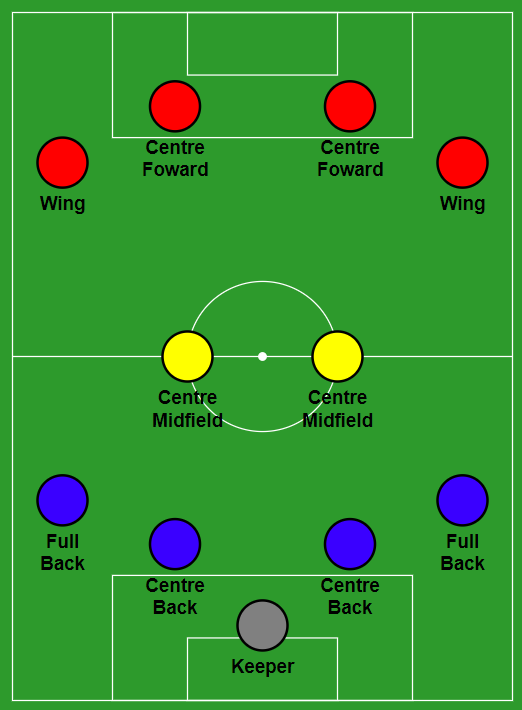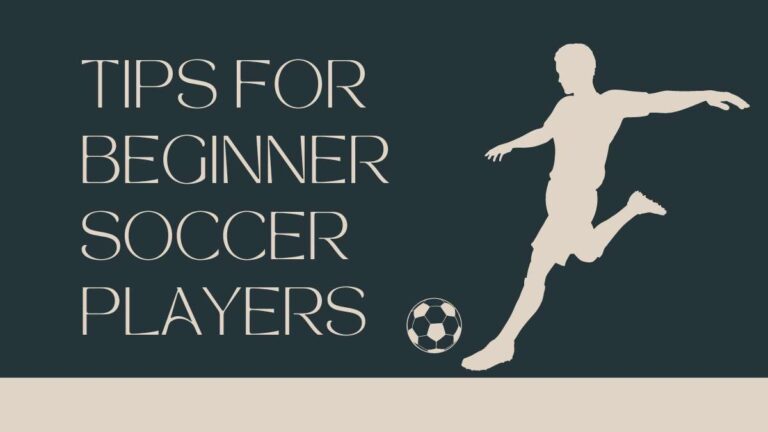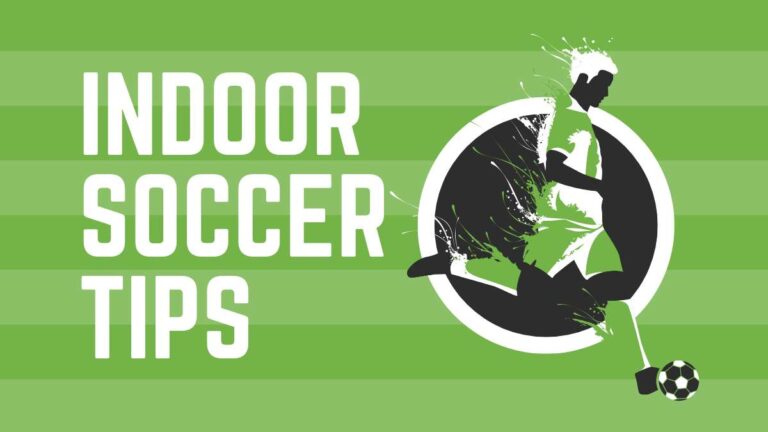The Ultimate Guide to Finding Your Perfect Soccer Position
Soccer is a sport that requires a unique combination of skills, athleticism, and strategy. Each position on the field comes with its own set of responsibilities and demands, and finding the right position can make all the difference in your success as a player. But with so many options, how do you determine which position is the best fit for you?
In this article, we’ll provide you with the ultimate guide to finding your perfect soccer position. You will be able to understand the different positions on the field and determine which position aligns with your personality and playing style. We’ll also discuss the importance of team dynamics and experimenting with different positions to find what works best for you.
If you are a soccer player looking to improve yourself, then make sure to check out our article on how to get better at soccer
Now let’s dive in and discover how you can find your perfect soccer position.
Understanding Different Soccer Positions

Soccer is a team sport that requires players to take on specific roles and responsibilities based on their position on the field. To find the right position for you, it’s important to understand the unique characteristics and demands of each position. Here’s a breakdown of the four main positions in soccer:
Goalkeeper
The goalkeeper is the last line of defense and plays a critical role in preventing the other team from scoring. Goalkeepers need to be quick, agile, and they should also have excellent reflexes. They also need to have good communication skills and be able to direct their teammates on the field.
Defender
Defenders are responsible for protecting the goal and preventing the other team from advancing. They need to be strong, physically fit, and able to win duels against opponents. Defenders must also be able to anticipate their opponent’s moves and quickly react to changes in the game.
Midfielder
Midfielders are the engine of the team, responsible for both attacking and defending. They need to have excellent ball control and be able to pass accurately and quickly. Midfielders also need to be able to read the game and make smart decisions on the fly.
Forward
Forwards are responsible for scoring goals and putting pressure on the opposing team’s defense. They need to have speed, agility, and excellent shooting skills. Forwards also need to be able to work well with their teammates and make smart runs to get into scoring positions.
Defenders can be further divided into center-backs and full-backs. Center-backs are typically taller and more physically imposing, while full-backs are usually faster and more adept at getting forward to join the attack. Both types of defenders need to be able to win tackles and headers, read the game, and communicate effectively with their teammates.
Midfielders can also be divided into different subcategories, such as defensive midfielders, attacking midfielders, and box-to-box midfielders. Defensive midfielders are responsible for breaking up the other team’s attacks and protecting the back line while attacking midfielders are responsible for creating chances and setting up the forwards. Box-to-box midfielders, as the name suggests, are expected to contribute at both ends of the field and provide a link between defense and attack.
By understanding the unique roles and demands of each position, you can start to identify which position might be the best fit for you. Keep in mind that it’s also important to consider your own skills and strengths, as well as the needs of your team when determining your ideal position.
Once you decide what soccer position you want, you could also read these articles to determine the perfect soccer cleats for each specific position:
- Best soccer cleats for goalkeepers
- Best soccer cleats for defenders
- Best soccer cleats for midfielders
- Best soccer cleats for strikers
Assessing Your Skills and Abilities
Now that you have a basic understanding of the different positions in the field, it’s time to assess your skills and abilities. To find your perfect soccer position, it’s important to be honest with yourself about what you’re good at and what you need to work on. Here are some questions to consider when assessing your skills and abilities:
- What are your strengths in the field? Are you fast, strong, or a skilled dribbler?
- What are your weaknesses? Are there certain skills or areas of the game that you struggle with?
- What type of player are you? Do you prefer to attack or defend? Are you a team player or do you like to work independently?
- What is your playing style? Do you prefer to play aggressively or conservatively?
- What is your level of fitness? Are you able to maintain a high level of intensity throughout the game?
By answering these questions, you can start to get a clearer picture of what position might be the best fit for you. For example, if you’re fast and enjoy attacking, you might consider playing as a forward. If you’re physically strong and enjoy defending, you might be suited for a position as a center-back.
Remember, it’s also important to be open to trying different positions and experimenting with your playing style. You may find that you excel in a position you hadn’t considered before, or that you need to work on certain skills to play the position you desire. By continuously assessing and improving your skills, you can become a well-rounded player and contribute to your team’s success.
Personality and Playing Style
Your personality and playing style can also play a big role in determining your ideal soccer position. Different positions require different types of players, and it’s important to find a position that suits your strengths and fits your personality. Here are some factors to consider:
- Are you a leader or a follower? Some positions, such as the goalkeeper or central midfielder, require strong leadership skills, while others, like the forward position, may require more individualistic play.
- Do you enjoy taking risks or playing it safe? Some positions, such as the attacking midfielder or forward, require players who are comfortable taking risks and making bold moves, while other positions, such as the defensive midfielder, require players who are more conservative and focused on protecting the back line.
- Do you prefer to play a supporting role or be in the spotlight? Some positions, such as the full-back or defensive midfielder, may require players who are comfortable playing a supporting role and focusing on the team’s overall strategy, while other positions, such as the forward or attacking midfielder, may require players who enjoy being in the spotlight and scoring goals.
- Are you a good communicator? Positions such as the center-back or goalkeeper require players who are strong communicators and can effectively direct their teammates on the field.
By considering your personality and playing style, you can start to identify which positions might be the best fit for you. Keep in mind that it’s important to be honest with yourself about your strengths and weaknesses, and to be open to trying new positions and adapting your playing style to suit the needs of your team. By finding the position that suits you best, you can maximize your potential and help your team succeed.
Team Needs and Dynamics
While it’s important to consider your skills, abilities, personality, and playing style when choosing your soccer position, it’s also important to think about your team’s needs and dynamics. Each team is unique, and different positions may be more or less important depending on the team’s strategy, strengths, and weaknesses. Here are some factors to consider:
- What is your team’s playing style? Does your team focus on possession or counter-attacks? Do they play a high-pressing game or sit back and defend?
- What are your team’s strengths and weaknesses? Does your team have strong forwards who can score goals or a solid defense that can shut down the other team’s attack? Is there a position that your team is lacking in, or that could benefit from a player with your specific skills and abilities?
- What is your team’s formation? Different formations require different types of players, and it’s important to find a position that fits within the team’s formation.
- What is the team’s culture like? Is it a competitive, high-pressure environment, or a more relaxed, laid-back atmosphere? Do you get along well with your teammates and enjoy playing with them?
By considering your team’s needs and dynamics, you can identify the position that will best help your team succeed. It’s important to be willing to adapt your playing style and position to fit within the team’s strategy and formation. Also, make sure to communicate effectively with your teammates both on and off the field. By working together and supporting each other, you can create a cohesive team that can win matches.
Experimenting with Different Positions
Once you’ve assessed your skills, personality, and team needs, it’s time to start experimenting with different positions to find the one that works best for you. Don’t be afraid to try out different positions, even ones that you may not initially think are a good fit. You may be surprised at how well you perform in a position you hadn’t considered before.
It’s also important to keep an open mind and be willing to learn from your experiences. Each position has its own set of challenges and opportunities, and by trying out different positions, you can gain a better understanding of the game as a whole. You may even discover that you have talents or abilities that you didn’t know you had.
When experimenting with different positions, it’s important to communicate with your coach and teammates. Let them know that you’re trying out a new position and ask for feedback and advice. Your coach may have insights into your strengths and weaknesses that can help you improve, and your teammates may be able to offer support and encouragement.
Remember, finding the right position takes time and patience. It’s okay to make mistakes and have setbacks along the way. The important thing is to keep learning and growing as a player. By experimenting with different positions and being open to new experiences, you can find the position that allows you to reach your full potential in the field.
Final Thoughts
Finding your perfect soccer position is not an easy task, but it’s worth the effort. By assessing your skills, personality, and team needs, and experimenting with different positions, you can find the position that allows you to perform at your best and contribute to your team’s success.
Remember that soccer is a team sport, and each position is important in its own way. It’s not just about scoring goals or making flashy plays; it’s about working together with your teammates to achieve a common goal. Whether you’re a defender, midfielder, or striker, each position requires a unique set of skills and abilities that are essential to the team’s success.
In the end, the most important thing is to have fun and enjoy the game. Soccer is a sport that can bring people from all backgrounds and cultures together, and it’s a great way to stay fit, make new friends, and learn important life skills like teamwork, discipline, and perseverance. If you’ve now decided what soccer position would be fit for you, read our article on how you can excel at your chosen position.
So, keep practicing, keep learning, and keep exploring different positions until you find the one that feels like the perfect fit for you. And most importantly, don’t forget to have fun and enjoy the beautiful game of soccer!
Frequently Asked Questions (FAQs)
- What is the hardest position to play in football?
The answer to this question may vary depending on who you ask, as each position has its own unique set of challenges and demands. However, many experts and players agree that the goalkeeper is one of the hardest positions to play in football. Goalkeepers are under constant pressure and must have quick reflexes, excellent hand-eye coordination, and the ability to make split-second decisions under high-stress situations.
- What position in soccer has the most injuries?
Again, the answer to this question may vary depending on the source and the specific data being analyzed. However, studies have shown that midfielders tend to experience the most injuries in soccer, likely due to the high physical demands of the position. Midfielders must cover a lot of ground on the field, engage in a lot of tackling and physical duels, and are often involved in both attacking and defensive plays.
- What is the most important position in soccer?
This is a difficult question to answer definitively, as each position is important in its own way and contributes to the team’s success. However, many experts and players would argue that the midfield is the most important position in soccer.
Midfielders are often referred to as the “engine room” of the team, as they are responsible for controlling the pace of the game, linking the defense and the attack, and providing support both offensively and defensively. A strong midfield can help a team dominate possession and create scoring opportunities, while a weak midfield can leave a team vulnerable to counterattacks and defensive breakdowns.







